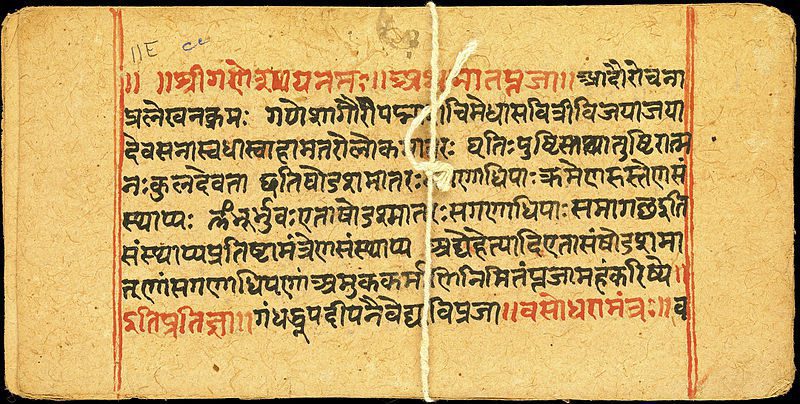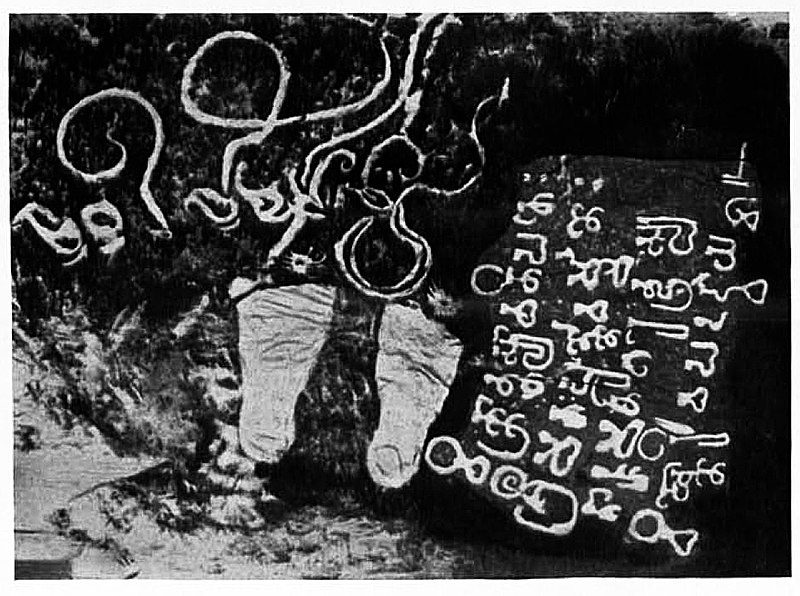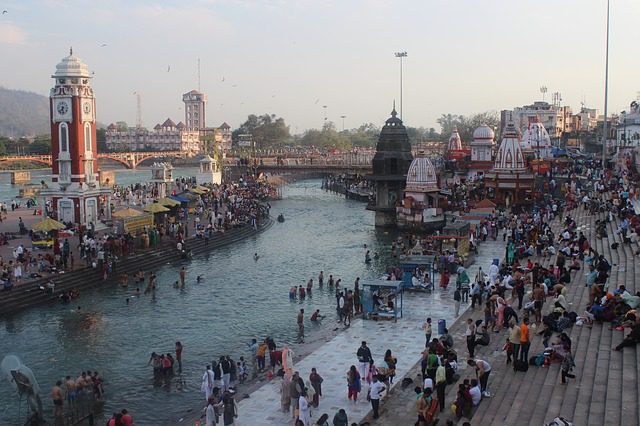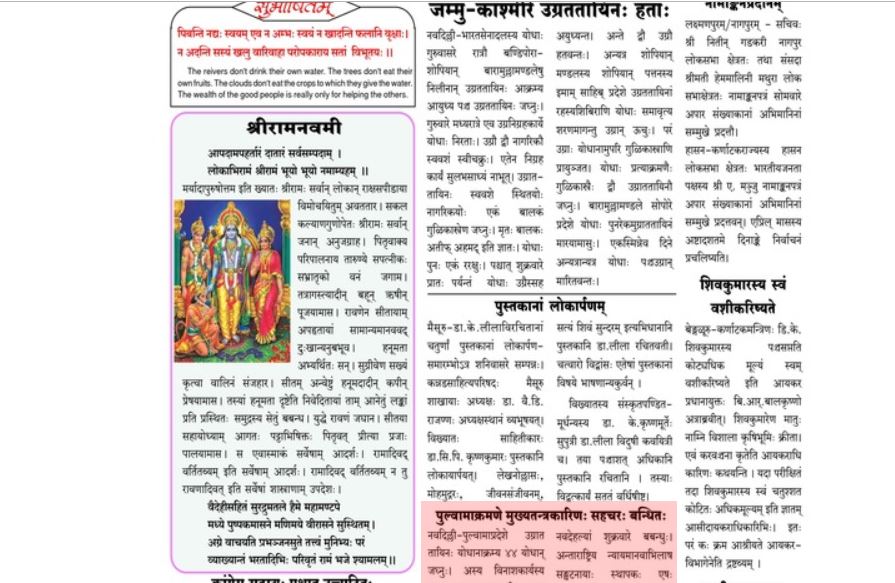A language said to be spoken by Gods in Hinduism, Sanskrit is a fascinating language. It is one of the most ancient languages in the world but that’s not all that is to Sanskrit.
There are some unknown, yet amazing facts about Sanskrit the language that everyone should know about.
1. Among the oldest language in the world that is still spoken today

With a recorded history going back 3,500 years, Sanskrit is believed to be one of the oldest languages in the world still in existence.
The Vedas, the oldest extant text in any language, was written in Sanskrit. The earliest form of the Sanskrit language was Vedic Sanskrit which came approximately around 1500 B.C., a period when knowledge was imparted orally through generations.
Tamil is also considered one of the oldest languages widely spoken by people today. There is a lot of debate about which one is older.
Another candidate for the oldest language still spoken today is Hebrew, a Semitic language spoken by around 9 million people in Israel and other parts of the world.
Hebrew has a recorded history of over 3000 years and is one of the oldest languages in the world. It has a long tradition of literature and has undergone a number of significant changes over time.
It is worth noting that determining the exact age of a language can be difficult, as the history of language is often complex and difficult to trace.
Besides, many languages have evolved and changed over time, which can make it challenging to determine their age. But Sanskrit is considered the forerunner among the most ancient language that is still spoken today.
2. Best natural language for AI

An old, yet, highly technical, and systematic language of the world. Following research, a report given by the NASA scientist, Rick Briggs, Sanskrit is one of the most suitable languages for natural language processing using Artificial Intelligence (AI)
Rick Briggs, a researcher at NASA wrote a paper in 1985 titled “Knowledge Representation in Sanskrit and Artificial Intelligence” that was published in AI Magazine.
The text from the paper reads – “There is at least one language, Sanskrit, which for the duration of almost 1000 years was a living spoken language with a considerable literature of its own Besides works of literary value, there was a long philosophical and grammatical tradition that has continued to exist with undiminished vigor until the present century. Among the accomplishments of the grammarians can be reckoned a method for paraphrasing Sanskrit in a manner that is identical not only in essence but in form with current work in Artificial Intelligence.”
He further described the aim of the paper — “ to demonstrate that a natural language can serve as an artificial language also, and that much work in Artificial Intelligence (AI) has been reinventing a wheel millennia-old”.
3. A highly versatile language

You can say something in the least amount of words in Sanskrit in comparison to the most modern languages of the world.
This is because Sanskrit has the largest number of synonyms for each word each with a specific meaning. For instance, a simple word like ‘elephant’ has about a hundred synonyms. English has only one word for love, whereas Sanskrit has 96.
Sanskrit has an amazing treasure of words and their synonyms to give great versatility. It has in fact over 70 words for water whereas English has just got one.
Astoundingly, the Sanskrit language has over 122 words for the action to go each with the specific meaning
4. A language of the future not past

A total of 17 countries including the US have Universities that are dedicated completely to Sanskrit and their sole purpose is research on the subject.
There is a separate department in NASA as well to conduct research on the language of Sanskrit. With all that research, Sanskrit might really be the future.
5. Phonetically accurate

Sanskrit is known for its highly structured and precise phonetics, which is one of the reasons it is considered an excellent language for poetry and verse. Sanskrit has a phonetic alphabet that includes 52 consonant sounds, 16 vowel sounds, and a number of diphthongs and compound sounds.
In Sanskrit, each letter represents a specific sound, and the sounds are pronounced in a precise and consistent manner. This makes Sanskrit a phonetically accurate language, with very little room for variations in pronunciation.
Sanskrit also has a system of accent marks, known as “Svara,” which are used to indicate the correct pronunciation of words. The use of Svara is particularly important in Sanskrit poetry, where the correct pronunciation and rhythm of the words are essential to the meaning and structure of the poem.
Overall, the phonetic accuracy of Sanskrit is one of the features that has contributed to its enduring popularity as a language of literature and religious texts. It is also one of the reasons that Sanskrit is considered an excellent language for studying and understanding the principles of phonetics and linguistics.
6. Sanskrit is a highly precise and unambiguous language

Sanskrit is known for its highly structured and precise grammar, which makes it a relatively unambiguous language.
It has a complex system of inflections and declensions, which allows words to be precisely inflected to convey a wide range of meanings.
This helps to eliminate ambiguity in the meanings of words and phrases, and it also allows for the precise construction of sentences and phrases.
In addition, Sanskrit has a rich vocabulary that includes many synonyms and technical terms, which helps to further clarify the meanings of words and phrases.
This makes it possible to convey precise and specific meanings in Sanskrit, which reduces the potential for ambiguity.
However, it’s worth noting that like any language, Sanskrit can still rarely be ambiguous in some cases. For example, the meanings of words can change depending on the context in which they are used, and there may be some words or phrases that have multiple meanings.
Further, Sanskrit has a system of honorifics and politeness markers that can affect the meanings of words and phrases, which can also contribute to potential ambiguity, but far less that other natural languages.
7. Many modern languages find their origin in Sanskrit

It is one of the oldest and most classical languages in the world, and it has had a significant influence on many modern Indian languages, including Hindi, Bengali, and Marathi.
It is estimated that around 500 million people in India and Nepal speak languages that have been influenced by Sanskrit.
As explained earlier, it is also known for its highly structured and precise grammar, which has made it an important language for the study of linguistics.
However, it is not accurate to say that Sanskrit is the “mother of all languages,” as this implies that all other languages are descended from Sanskrit.
In fact, there are many other languages that have a long history and that have had a greater influence on the development of other languages.
Further, the relationships between different languages are complex and multifaceted, and it is not accurate to view any one language as the “mother” of all others.
Nearly(97%) of all languages have been directly or indirectly influenced by this language.
8. Increases brain power

Sanskrit has also been proven to help in speech therapy. Research suggests that learning the language improves brain functioning and students improve academically.
They get better marks in subjects like Mathematics and Science which some people find difficult. It is because Sanskrit enhances memory power and concentration.
9. A British School Makes Sanskrit Compulsory

James Junior School in London has made Sanskrit compulsory. Students of this school are among the toppers in various fields and worldwide exams year after year.
Some schools in Ireland also have made Sanskrit compulsory.
10. Sanskrit-speaking villages

We all know how ancient the language of Sanskrit is. However, there are still many villages in India where Sanskrit is still the primary language of communication.
The villagers also insist the visitors converse in Sanskrit with them. Banter, greetings, quarrels on the streets, teaching – it’s all in Sanskrit here.
11. Official language of Uttarakhand State of India

Sanskrit is the 2nd official language of Uttarakhand despite the fact that not even 1% of population can speak the language.
12. Sanskrit Newspapers and Radios

Not many people know the interesting fact that Sanskrit daily news and newspapers exist even today.
It is the language of more than 90 weeklies, fortnightlies, and quarterlies published across India.
Gujarat started publishing Vartman Patram and Vishwasya Vrittantam five years back and an all-India Radio has been broadcasting daily news in Sanskrit once a day since the year 1974.
‘Sudharma’, the newspaper is published out of Mysore, a historic city in Karnataka, India.
It has been running since 1970 and is now available online as an e-paper. You can read the Sanskrit
13. The Language of the Gods

Sanskrit was considered as ‘DEV BHASHA’ or ‘DEVAVANI’, the Language of the Gods by ancient Indians. The script is called DEVNAGARI which means used in the cities of the Gods.
It was believed to have been generated by the god Brahma who passed it to the Rishis (sages) living in celestial abodes, who then communicated the same to their earthly disciples from where it spread on earth.
14. Decline of Sanskrit

The decline of Sanskrit started around the 13th century. This coincides with the beginning of Islamic invasions of the Indian subcontinent to create, thereafter expand the Muslim rule in the form of Sultanates and later the Mughal Empire.
With the fall of Kashmir around the 13th century, a premier center of Sanskrit literary creativity, Sanskrit literature there disappeared, perhaps in the “fires that periodically engulfed the capital of Kashmir” or the “Mongol invasion of 1320”.
15. First language of only a few

In the 2011 census, 24,821 Indians said that Sanskrit was their primary language, which is less than 0.01 percent of the entire Indian population.



